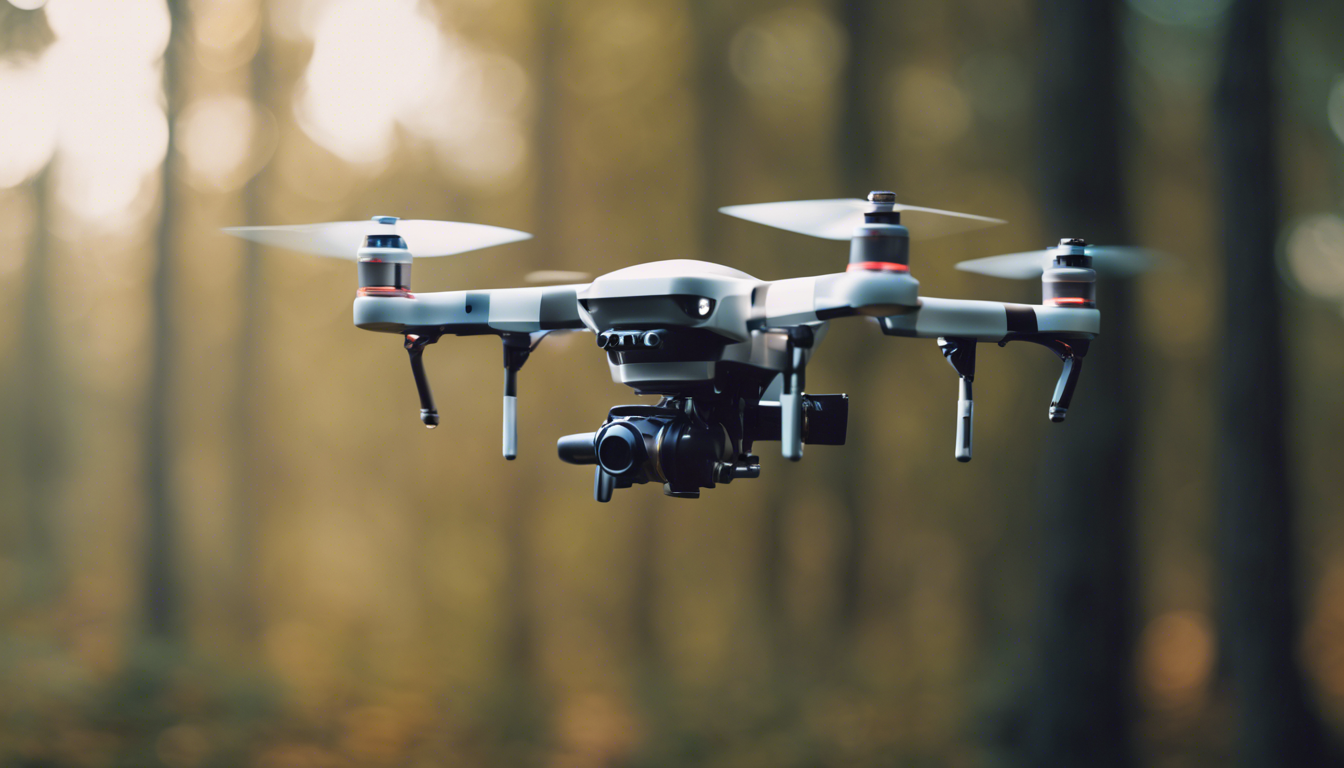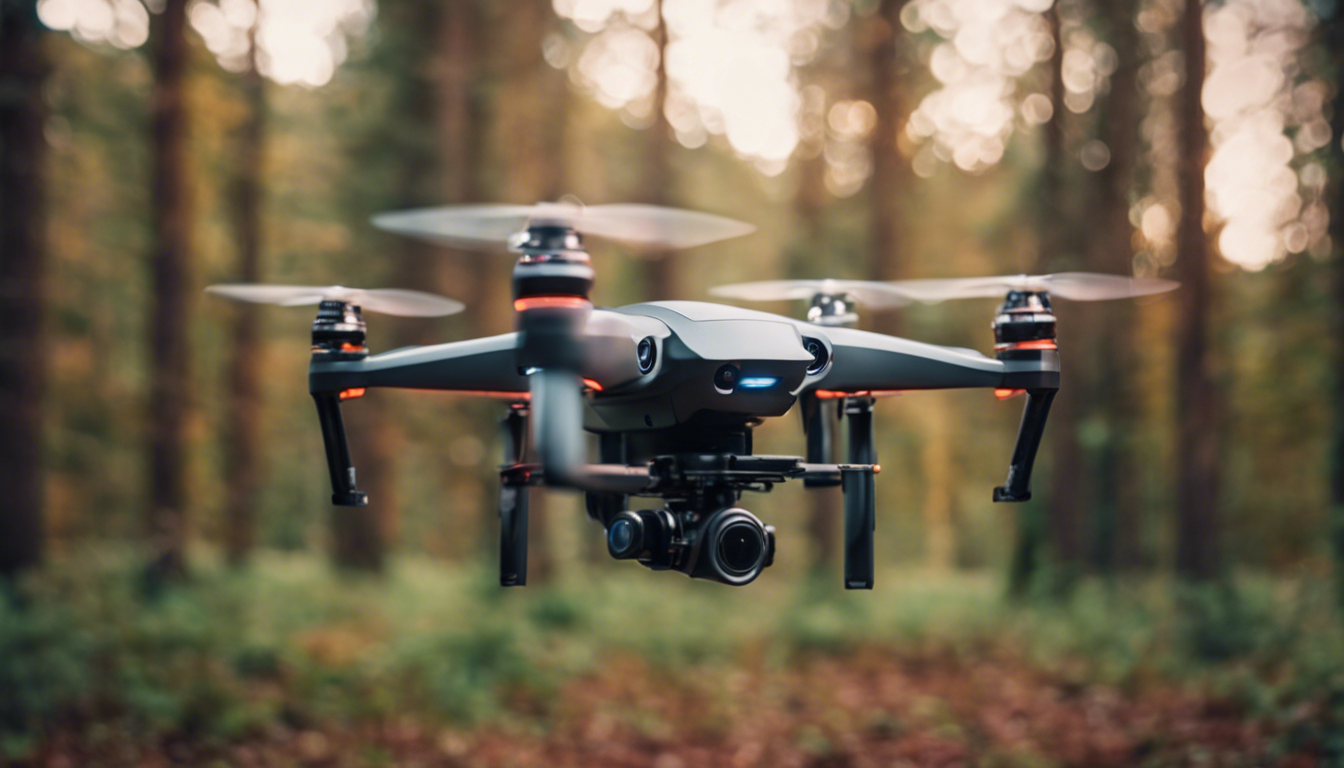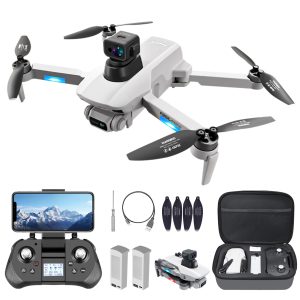
Understanding legal regulations for urban drone operation
Flying drones in the midst of skyscrapers and bustling city streets might make you feel like a tech-savvy superhero, but there’s a caveat — navigating the thick web of legal regulations that come with urban drone operations. Knowing the rules is as crucial as knowing how to pilot your drone. Urban jungles are not just concrete labyrinths but also a myriad of invisible boundaries you must respect.
Every pilot has a responsibility to soar the cityscapes with both fun and lawfulness in mind. And believe me, these laws aren’t there to rain on your parade; they’re crafted to ensure everyone’s drones, heads, and privacy remain intact. For example, did you know that in many areas, flying your drone above a crowd is a huge no-no? It’s one of those things that can land you, and your drone, in a lot of trouble — figuratively and literally.
And then there’s the altitude cap: flying above a certain height (often around 400 feet) is typically forbidden in urban airspaces. This isn’t just about avoiding potential collisions with aircrafts; at that point, you’re so high that your drone becomes more of a speck than a spectacle anyway. But remember, the specifics can vary depending not just on the country, but on the city and sometimes even the district! It’s pretty dense stuff, and we’re not just talking about the city population.
Many cities require drone registration and even special permits, especially for commercial filming. So, don’t consider that ‘stealth mode’ is an option. Your drone might be small and equipped with quiet rotors, but it’s not invisible to the long arm of the law. And speaking of invisibility, flying at night is often restricted too. That is, unless your drone is decked out with lights that would give Times Square a run for its money.
Now, let’s talk briefly about the no-fly zones, those areas that are to drones what kryptonite is to Superman. Airports, government buildings, military installations — these are all likely to be drone-free zones. Even some parks and historical sites say ‘thanks, but no thanks’ to your aerial acrobatics. It might astonish you to learn that some cities have such a web of restrictions, you’d need a Ph.D. in Cartography and Urban Planning just to figure out where you can fly.
Before you think ignoring these regulations, know that drone laws are getting more attention than ever before. Fines can be hefty, and your drone can be confiscated, grounding your urban explorations permanently. It’s all about being a responsible pilot. Consider of it as getting a license to thrill. And the first step to that is embracing the rules as part of the drone-flying package.
Lastly, keep in mind that these regulations are constantly evolving as technology and city landscapes change. It is not just a one-and-done deal; staying informed is an ongoing part of the drone-owning lifestyle. Keeping an eye on the latest in drone law will mean you can focus on the flying — and not on fines or, even worse, flying faux pas that could’ve been easily avoided.
Mastering drone control in dense environments
Once you’ve digested the rulebook, you’re ready to explore the real action. Piloting a drone through the urban maze requires a finesse that’s akin to threading a needle while riding a rollercoaster. The goal here is to maneuver smoothly without ruffling any feathers, or more accurately, without clipping any buildings!
To avoid making your drone an expensive casualty of urban canyons, getting a solid grip on your controls is paramount. Practice makes perfect, and in this case, practice involves putting in hours in more forgiving environments. Consider of it as a dojo for drone enthusiasts — you need to earn your black belt before stepping into the city arena.
Understanding the effects of wind patterns between buildings is also crucial. You wouldn’t believe it, but sometimes the gusts that whip around skyscrapers create mini weather systems that could toss your drone around like a leaf in a storm. And trust me, the last thing you want is for your drone to play tag with unpredictable winds at dizzying heights near glass windows.
Moreover, there’s a whole array of high-tech tools that can help bolster your flight control. Some drones come with sensors that beep and boop like something out of a sci-fi flick, warning you of obstacles that threaten to ruin your day — and your drone’s aerodynamics. Using these features is the difference between a smooth operation and a tumultuous tumble from the sky.
Ever heard of the term ‘situational awareness?’ It’s your new best friend. Always be mindful of what’s going on around your drone. Unlike wide-open spaces, urban landscapes are teeming with distractions that could lead to collisions: from curious birds that ponder your drone is a potential mate, to sudden, spontaneous street festivals. Your head needs to be on a swivel, and your fingers need to dance over the controls with a calm precision.
While some drone pilots rely solely on FPV (First Person View) to navigate, seasoned urban flyers often find that mixing it up with line-of-sight flying gives them an edge. Sometimes, there’s just no substitute for seeing your drone with your own eyes. FPV can feel like you’re in the cockpit, which is thrilling, but line-of-sight can sometimes offer a clearer picture of your drone’s immediate airspace.
It is also important to talk about the magic of muscle memory. The more you fly your drone, the more natural the controls will feel in your hands. When you’re up against urban obstacles, you don’t have the luxury of second-guessing your thumb’s twist or your finger’s flick.
Finally, there’s an emotional aspect to ponder — the joy of mastering your drone’s movements so well, you feel as one with your mechanical bird. You aren’t just pushing buttons and pulling joysticks. You’re conducting an airborne ballet, and the city’s skyline is your stage. It’s an art form where precision meets intuition, delivering you the key to the ultimate urban flight experience.
So, remember, whether it’s your first flight or your hundred-and-first, never get complacent. Always keep learning and adapting because each urban flight is as unique as a snowflake in a concrete winter. Be respectful of the environment, responsive to the unexpected, and revel in the mastery of controlling your drone against the vast canvas of the city.

Mitigating privacy and safety concerns
Imagine a scenario where your drone becomes the talk of town, and not in a good way. It crashes through someone’s window, or worse, it breaches the haven of their personal space with its camera lens pointed intrusively. Yes, we’re tapping into every city dweller’s personal bugbear — privacy. Maintaining a respectful distance from the private lives of others while flying your drone is just as important as steering clear of skyscrapers and streetlights.
One might think it’s a common-sense practice, but with great power comes great responsibility. That nifty flying gadget can capture high-definition footage from high above, tempting even the best of us to take a peek at things not meant for our eyes. It is a simple rule: if you wouldn’t want a drone peering into your personal den, don’t fly your drone where it could do the same to others.
But let’s also address safety. It is all fun and games until someone gets a propeller to the head. Drones are generally safe, but when your flying buddy weighs as much as a loaf of bread and can zip around at the speed of a sprinter, accidents are a real possibility. As pilots in an urban domain, keeping the public safe from potential drone mishaps is our sworn duty.
Remember that situational awareness we talked about? It’s imperative when it comes to safety. This means no swooping down over traffic-heavy streets or darting recklessly between high-rises. Visualize the path of your drone and imagine the what-ifs. What if it malfunctions? What if a sudden gust of wind sends it off course?
Then there’s the technology meant to be your silent guardian, your watchful protector. Drones equipped with automatic return-to-home functions can be lifesavers. Say your battery is running low or you lose signal — your precious UAV will make a beeline back to you. In urban settings, be doubly sure to set a suitable return height to avoid any obstacles on an unplanned return trip.
Don’t forget, either, the magic of propeller guards. They might not look like much, but these little accessories can be the difference between a harmless bump and a full-blown drone catastrophe. Whether they protect a person, a passerby’s pet or just ensure your drone bounces back from an accidental building bop, they’re an investment in safety worth making.
In a nutshell, the urban drone pilot’s motto should be ‘Safety and Privacy First’. Respect airspace, respect privacy, and always stay aware of your surroundings. Fly high, fly safe, and fly with the peace of mind that comes from knowing you are not invading anyone’s space or risking the well-being of those below. And speaking of below… why don’t we switch gears and look at how to capture the breathtaking views our cities have to offer without ruffling feathers — figuratively and literally.
Capturing stunning urban footage with drone cameras
Seize your drone, charge those batteries, and clear those memory cards—it’s time to unleash the incredible potential that drone cameras have for capturing extraordinary urban landscapes from a bird’s-eye view. Getting that jaw-dropping footage, however, isn’t simply a matter of taking to the skies and hitting the record button. It is an art crafted with patience, skill, and a keen eye for composition. But hey, don’t sweat it. With a few tips under your belt, you’ll be shooting cinematic-quality scenes in no time.
First off, lighting is everything. The golden hour—those precious moments right after sunrise or before sunset—casts a magical glow that can transform a mundane cityscape into a palette of soft hues, long shadows, and sharp contrasts. Imagine the last rays of the sun tickling the glass of skyscrapers, the warm tones bathing city parks, and the twinkling lights beginning to pepper the evening scenery. That’s the kind of footage that doesn’t just document a city; it tells its story.
But what about when you’re caught under the harsh midday sun? Well, that’s when polarizing filters come to the rescue. They can help reduce glare and reflections, deepen the blues of the sky, and enhance the clouds to give your daytime footage some serious punch. Remember, it is not just about what you capture, but how you capture it.
Next, consider the flow of movement. Cities are living organisms—traffic streams along the roads like blood through veins, pedestrians bustle about as if part of a complex dance, and trains slither through the urban landscape like metallic snakes. Capturing this motion can add a dynamic edge to your footage. Use slow-motion for that poetic, languid effect, or speed up the tempo with a time-lapse to showcase the pulse of the city. The contrast between the bustling activity below and the serenity of your hovering drone can be utterly spellbinding.
And when it comes to camera angles, play around. A high-angle shot straight down can transform intersections into abstract art, while a low flight over a river can mirror the city’s silhouette in the water’s surface, creating a symphony of light and architecture. Sideways tracking shots can make viewers feel like they’re sliding through the city themselves. Mixing up perspectives not only adds variety but also draws viewers into the different layers that make up the urban fabric.
For those seeking the less explored vignettes of city life, explore the overlooked alleys, the hidden courtyards, and the architectural gems that are begging for attention. That’s where you’ll find the unique stillness amidst the chaos, the graffiti turning a nondescript wall into a canvas, and the juxtapositions that tell compelling stories without a single word.
Finally, remember that editing weaves the final narrative. It’s where you cut, splice, slow down, speed up, and set the rhythm of your visual symphony. Choose music that complements the mood of your footage, sync clips to the beat for that dramatic flair, and don’t be afraid to let some scenes breathe. Sometimes the story is in the silence between the notes as much as the notes themselves.
Because when you capture the essence of urban life through your drone’s lens, you’re not just making videos; you are crafting experiences. You are not just a pilot or a filmmaker; you are an urban storyteller elevating the mundane to the magnificent. So go on, get out there, and let your urban drone flight be your canvas, the city your palette, and every capture a masterpiece in the sky.
